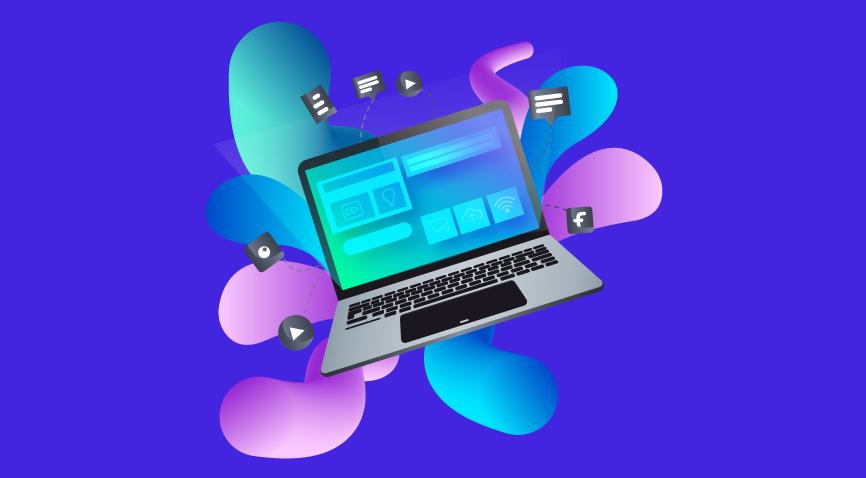Top 10 Content Distribution Platforms to Look Out For

Table of Contents
- Introduction
- What is content distribution?
- What are the top content distribution platforms?
- Conclusion
- FAQs
The primary purpose of content marketing is to reach a large number of people. When a content marketer creates a piece of content, they would want to promote it too.
Content marketing and distribution are crucial to the growth of any business. Using digital content distribution platforms is an incredible way to attract more traffic to your website. It also helps you ensure that a reader is spending quality time on your site or page. Before delving into the top platforms for content distribution, let us try and understand the meaning of and need for content distribution.
What is content distribution?
Content distribution can be defined as the process of promoting or marketing content to an online audience with the help of various channels. It is necessary, because it boosts your brand awareness, creates loyal followers, as well as encourages your readers to click on, react to, and engage with your content. Writing content is one thing but making sure that it reaches a large number of people can only be achieved with a robust content distribution plan. There are three basic types of content distribution platforms.
Paid media
Paid media can be defined as the external, paid marketing efforts for your content, such as pay-per-click (PPC) advertising, display ads, branded content, etc. It is crucial for brand awareness and revenue generation.

Owned media
Owned media can be defined as collaterals owned by the brand. It means that a business has complete control over its digital marketing platforms, such as websites or social media handles. Email marketing campaigns such as newsletters or blogs are also a part of owned media.
Earned media
Earned media is publicity or exposure gained from methods other than paid media. This can be in the form of guest posts, product reviews, online recommendations, etc.
What are the top content distribution platforms?
When choosing a distribution platform, you must factor in what kind of content you have at hand, the audience you want to target it at, and your budget. Here are some leading content distribution platforms you should consider:
SEMrush
With SEMrush, you can tap into advanced content analytics. From content writing services and paid advertising tools, SEMrush has everything you need to create a winning content distribution plan. Some other features on this platform include market analysis, content optimization, and social media posters through which you can publish your content across various social media channels.
Buffer
Buffer is a platform that allows you to “set and forget” your distribution/publishing schedule. For different platforms such as Facebook, LinkedIn, Twitter, you can easily queue posts by setting a scheduling time or buffering them. One of the highlights of Buffer is that it is extremely easy and efficient to use. There is no extra skill needed to use it and it easily fits within your workflow. It not only saves time but also boosts productivity.
Mailchimp
Mailchimp is a content marketing automation platform designed and developed for businesses that use email to reach their target audience. It is an all-in-one tool that helps you easily manage your emailing lists, create customized templates, and automate your email marketing campaigns. Mailchimp can be used by organizations that want to leverage email marketing to run their campaigns.
StoryChief
StoryChief is another leading digital content distribution platform. With it, you can produce, regulate, and publish content on multiple channels. You can also create a content calendar in order to streamline your publishing activities. This platform helps track and measure the performance of your content across all channels.
HubSpot
Hubspot is a cloud-based customer relationship management (CRM) software that helps sales and marketing teams to create, manage, and track leads. You can automate tasks, manage your content, access analytics tools, and much more. It also helps in boosting ROI and optimizing inbound marketing strategies to generate better leads. HubSpot is a great content distribution platform designed to help your company market and sell more effectively.
Hootsuite
Hootsuite is an excellent social media management platform used extensively by social media managers. All the important social media tasks such as scheduling posts, resolving customer queries, reporting and analyzing various metrics, and more can be easily managed with Hootsuite. With just one platform, you can create content and schedule posts, as well as manage team members and measure your ROI.
Contently
Contently is a tool that is used by multiple brands for creating engaging content. With the help of an end-to-end platform, a dedicated strategy, a streamlined network, and holistic, solution-based features, Contently helps its clients achieve strategically varied content that drives results.
BuzzStream
BuzzStream is a tool that is used for link building and digital PR to help businesses market their products and services. It also helps in influencer marketing by connecting you to influencers in your particular niche. With BuzzStream, you can reach a number of potential prospects, schedule follow-ups, and more. Another important feature of this software is the reporting tool that helps you correctly assess the performance of your campaign and analyze what is working best for you. It also offers research, SEO link building, and content promotion services.
Help a Reporter Out (HARO)
HARO is a great tool to connect with journalists. If you’ve got expertise or experience of any sort, you can sign up on HARO, get in touch with a reporter, and make your story heard. It connects thousands of reporters and brands across domains.
Social media
Social media has swiftly become one of the leading platforms through which marketers and brands distribute their content. Sponsored ads on Facebook are paid content created and distributed by business pages. They are targeted at a specific audience. Sponsored posts don’t just help you in increasing likes, comments, and shares, but they also result in more website traffic and lead generation.
Promoted or sponsored are Tweets that are paid for by businesses wanting to increase their Twitter engagement. Promoted Tweets are marked as such on Twitter, but otherwise, they can be liked, commented on, and retweeted. When advertisers pay for a Promoted Tweet, it enables them to put their best content in front of their target audience at a specific time.
Video distribution platforms can’t be left out of this list. They help in creating, uploading, managing, delivering, and downloading video content. Their primary purpose is to provide you with a seamless mechanism for creating and publishing videos online. Some of the best video distribution platforms are Wistia, Facebook, YouTube, Vimeo, and Instagram, among others. These online video distribution platforms are used by marketers to promote their video content effectively. They are a great way to grab the attention of viewers and retain it.
Conclusion
It is quite important to market your content in a way that it reaches a large number of people. This is possible with the right kind of strategy, tools, and channels. Depending on your content and the kind of business you own, you can choose from a wealth of content distribution platforms. As per their needs, brands prefer some content distribution platforms over others. This approach, however, is fruitful only when brands have a full-fledged strategy that aligns with their business goals.
When choosing paid, owned, or earned media, budget constraints need to be considered. To create a successful and result-oriented content distribution strategy, you need to evaluate how each type of media might be suited to the type of content you wish to publish. Then decide where to allocate your resources in a way that can generate the maximum output.

FAQs
Some of the best digital content distribution platforms are SEMrush, Contently, Storify, BuzzStream, Mailchimp, Hootsuite, and more.
Content marketing distribution platforms provide assistance with content creation, optimization, distribution, publishing, and assessment. Their main purpose is to help marketers achieve the desired results from their content.
A content marketing strategy is an approach to creating and promoting relevant and valuable content. The aim is to attract, engage, and ultimately convert audiences.
1. Personalize your content.
2. Research your competitors’ strategies.
3. Create catchy titles.
4. Include visual elements.
5. Harness the power of influencers.
6. Leverage local SEO.
1. It improves audience retention.
2. It drives substantial traffic to your website.
3. It establishes consumer trust.
4. It helps in generating quality leads.
5. It boosts conversions.
6. It enhances your SEO efforts.
7. It builds your industry authority.
Latest Blogs
Explore how Google’s 2025 AI search updates triggered ranking chaos. Learn actionable strategies to adapt your SEO for AI Overviews, zero-click searches, and SERP volatility. Stay ahead now.
Learn how to rank on AI search engines like ChatGPT, Perplexity, and Gemini by optimizing your content for authority, structure, and relevance. Stay ahead in AI-driven search with this strategic guide.
Explore the best healthcare SEO services for your medical practice. Improve online visibility and effectively reach more patients in need of your services.


